Speed: The aircraft flies direct, bypassing congested hubs, so supplies that might take days via scheduled routing can reach responders in mere hours.
Flexibility: Departure is set to your clock, not an airline’s, and you can route into smaller, closer airstrips that cut onward trucking time.
Exclusivity & security: With no other cargo on board, sensitive items such as pharmaceuticals or high-value generators travel under tight control, reducing pilferage or tampering risk.
Specialisation: Charter operators can accommodate dangerous goods, vaccines requiring cold-chain power, or bulky shelter materials that scheduled carriers often refuse.
In many humanitarian emergencies, traditional shipping methods cannot deliver aid fast enough or may be completely cut off due to damaged infrastructure. This is where air cargo charter services step in as a lifeline.
Many such regions lack road or rail links and have limited ports or runways, while extreme weather can cut off access for weeks. In these situations, air cargo charter services act as a lifeline, enabling direct delivery of freight to places that standard shipping or scheduled flights cannot reach. For logistics professionals and shippers, understanding how air charters overcome these hurdles is vital to keeping supply lines open and time-critical cargo on schedule.
WHAT IS AIR CARGO CHARTER?
An air cargo charter gives you exclusive use of an aircraft, freeing you from fixed airline routes and rigid timetables. Because you reserve the entire plane, the flight path, departure window, and load configuration are tailored precisely to your shipment.
This custom approach is ideal when freight is oversized, unusually heavy, or urgently required and can’t move through traditional air-freight channels. You can schedule nonstop service between the most convenient airports, on the exact timetable your project calls for.
From a one-off industrial component to a mission-critical project load, an air cargo charter delivers your goods exactly where—and when—you need them.
TALK TO AN EXPEDITOR NOW
Get a Quote in Minutes for Your Time-Critical Freight Needs
Why Air Cargo Charters Are Lifesaving in Crises
- In a humanitarian crisis, speed and direct access are often the highest priorities. When roads, bridges, or ports are destroyed or blocked, air cargo charters may be the only viable option to reach the disaster zone. For example, after a major earthquake or hurricane, local airports might be the sole entry point for aid if highways are impassable. Cargo planes can fly in relief shipments within hours, whereas ground or sea transport might take days or weeks – time that survivors on the ground cannot afford to wait. By mobilizing dedicated cargo aircraft, aid agencies ensure that food, clean water, medical kits, and shelter materials arrive without delay, even when infrastructure on the ground is in ruins.
- Another reason charters are lifesaving is their flexibility in reaching remote or hard-hit areas. Charter flights are not limited to major commercial airports; they can land on shorter runways or improvised airstrips closer to the affected communities. In many cases, air charter services can access regions that scheduled airlines do not serve at all. This ability to fly direct into remote destinations or isolated villages – whether a mountain valley cut off by floods or a small island after a tsunami – means aid gets delivered directly to the people in need, rather than stopping at a distant hub. During wildfires, floods, or disease outbreaks, having a dedicated freight plane ready to go can expedite the delivery of vital supplies to field hospitals and refugee camps, circumventing obstacles on the ground.
- Equally important is the capacity of chartered cargo planes to carry large and heavy payloads needed for relief. These cargo aircraft range from medium-sized turboprops that can bring in a few tons of supplies, to giant cargo freighter aircraft like the Boeing 747 or Antonov An-124 that can haul heavy machinery, generators, or dozens of pallets of aid in one trip. Often, one charter flight can deliver what would otherwise require multiple truckloads, accelerating the relief effort. As one industry guide notes, chartered cargo planes can swiftly deliver humanitarian aid to affected regions when disasters strike.
Cargo Aircraft and Supplies: What Gets Delivered
One of the biggest advantages of chartering a cargo aircraft for humanitarian relief is that every cubic foot of space is dedicated to the mission at hand. Because there is no need to conform to an airline’s fixed schedule or route map, the flight can depart the moment the load is ready and head straight to the nearest operational airfield—often a smaller or otherwise hard-to-reach airport.
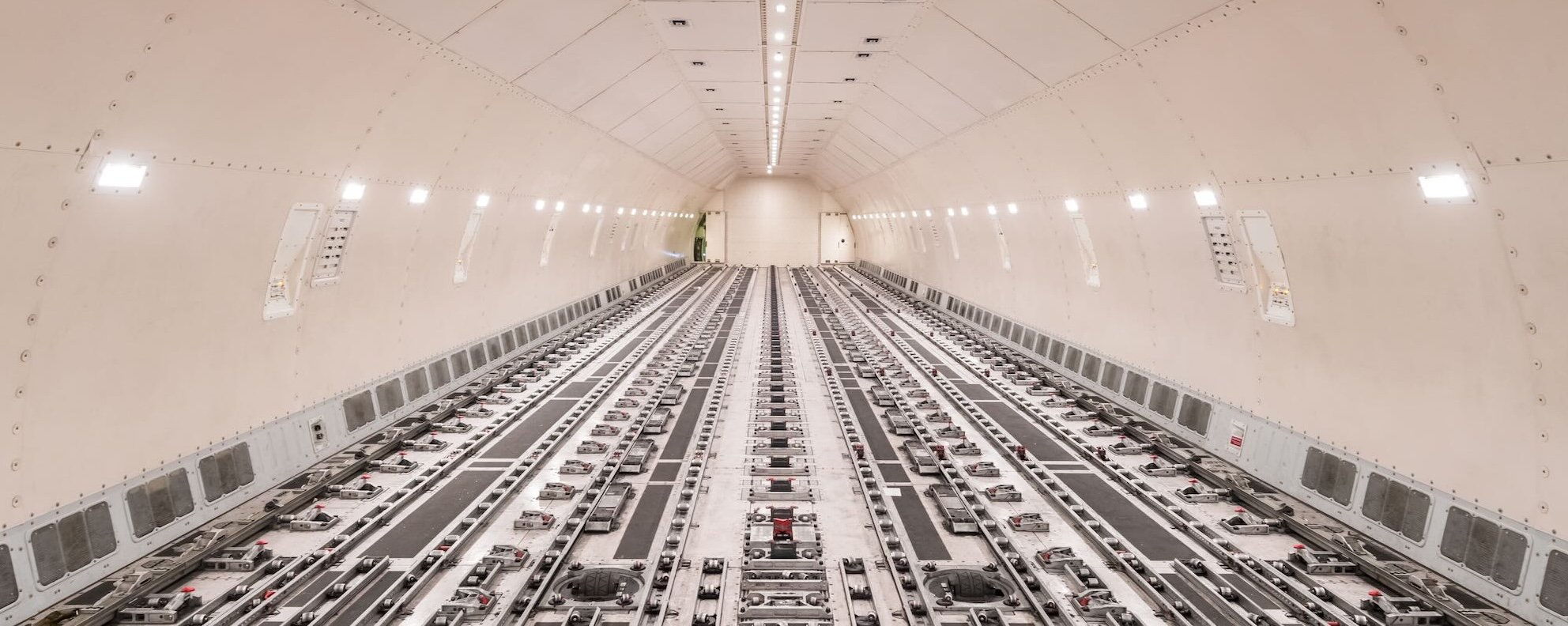
Food and Clean Water
When local supply chains collapse, calories and clean water become the first lifeline. Chartered freighters routinely carry palletized sacks of rice and grain, high-energy biscuits that resist spoilage, and bulk cartons of bottled water. Where hauling water is impractical, airlifts often include compact water-purification units or chlorination tablets so communities can make nearby sources safe to drink. Because the entire flight is configured for aid, loadmasters can position these essentials for rapid off-load, ensuring distribution starts within minutes of touchdown.
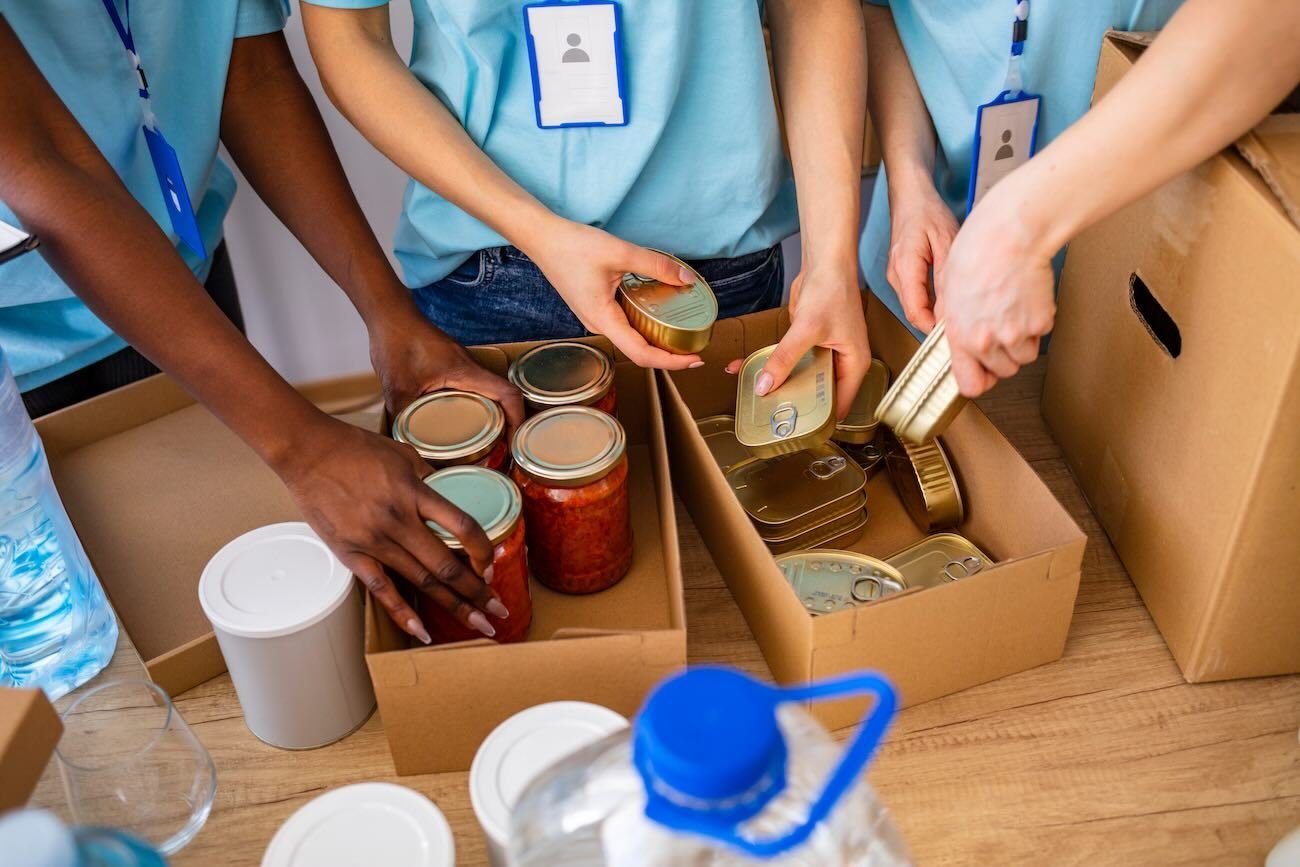
Medical Supplies and Equipment
Health care infrastructure is usually among the earliest casualties of a disaster, so medical cargo is prioritized. Typical consignments range from trauma dressings, antibiotics, and vaccines to fully kitted surgical theatres packed in ruggedized crates. Larger freighters can even accommodate ambulances, mobile X-ray units, or diesel generators that power a field hospital for weeks. During the COVID-19 pandemic, for instance, charter flights became the primary artery for moving millions of masks, gowns, and temperature-sensitive vaccine doses when scheduled passenger services were grounded.
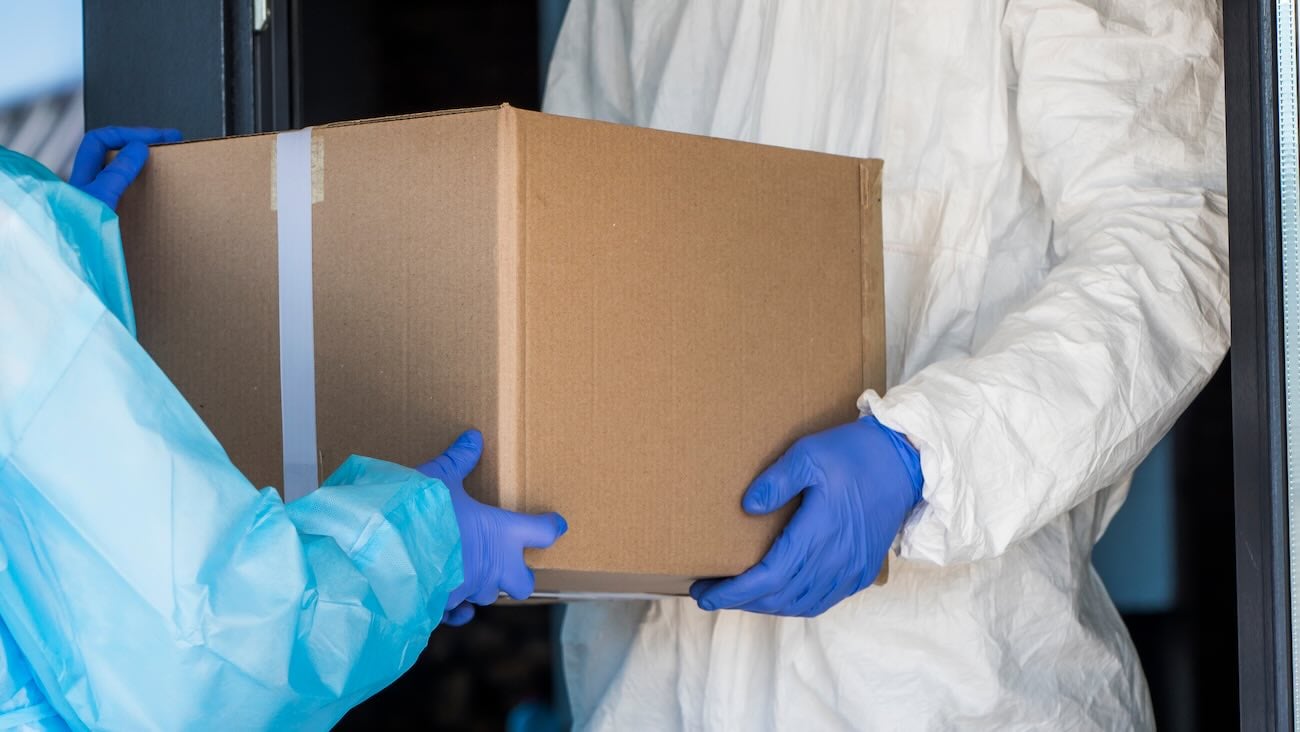
Shelter Materials
Once immediate survival needs are met, keeping people protected from the elements is vital. Tents, heavy-duty tarpaulins, and roll-on roofing sheets are loaded in bulk, often alongside toolkits and fasteners so volunteers can erect shelters quickly.
A single wide-body cargo aircraft can deliver thousands of family tents or enough lumber to rebuild an entire village’s core structures. Because the aircraft is chartered, relief agencies can specify mixed loads—pairing, for example, winterized tents with insulation panels—so the first flight already contains everything required to set up habitable shelters.

Vehicles and Fuel
Rugged terrain or damaged roads frequently prevent first responders from reaching remote communities, so mobility assets ride in by air. Cargo charters transport 4×4 trucks, motorbikes, and even amphibious vehicles, lashed to pallets and ready to roll the moment the ramp drops.
Accompanying drums of diesel or aviation gasoline ensure these vehicles can operate independently in areas where fueling stations are offline. By bundling vehicles and fuel together, relief organizations eliminate delays that would otherwise arise from sourcing energy on the ground.

Specialized Teams and Personnel
Although freight is the primary focus, a charter aircraft can be outfitted with a small cabin section or palletized seating to carry experts who must arrive with their gear. Search-and-rescue squads often fly with dogs, drones, and cutting tools, enabling them to fan out immediately after landing.
Engineers, IT technicians, and medical teams likewise travel alongside generators, satellite terminals, or diagnostic equipment they will use in the field. This “people-plus-payload” model shortens the handoff between delivery and action, accelerating the overall relief operation.
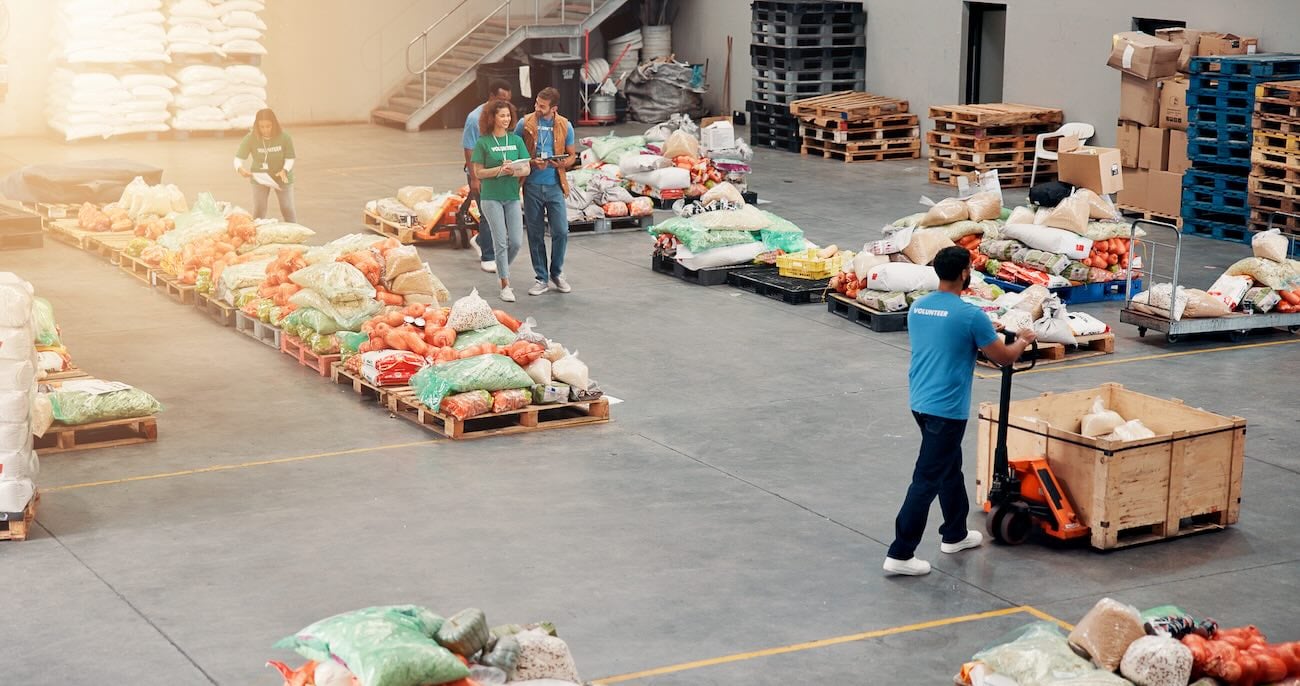
Coordinating and Overcoming Challenges in Humanitarian Logistics
- Time-Critical Delivery
- Damaged Infrastructure
- Airspace and Coordination
- Customs and Regulatory Hurdles
Time-Critical Delivery
Every relief charter is essentially a race against time. Aid must be delivered during a brief window when it can do the most good. Charter providers work under intense pressure to cut down every possible delay – from rapidly obtaining permits to loading cargo in record time. Their ability to mobilize planes, crews, and support staff at a moment’s notice is what makes same-day or next-day air delivery of aid possible.
Damaged Infrastructure
Earthquakes, storms, or conflict can damage runways, bridges, and even airport equipment in the disaster area. This complicates aircraft handling on arrival. Pilots may have to land on shorter or rougher runways than usual, and offloading equipment (like forklifts or cargo loaders) might not be available. Air charter teams often bring necessary ground equipment or coordinate with military units to ensure the plane can be unloaded efficiently even in austere conditions.
Airspace and Coordination
Customs and Regulatory Hurdles
Even in emergencies, international aid must clear customs and comply with regulations. Charter operators strive to pre-arrange customs clearance or obtain waivers for humanitarian shipments to prevent supplies from sitting idle. This often requires diplomatic effort and paperwork done in advance. Experienced freight brokers navigate these rules quickly, using their expertise so an urgent relief flight isn’t held up by bureaucracy.
Cargo Freighter Aircraft
One of air charter’s greatest assets in humanitarian response is the sheer variety of aircraft that can be mobilized—everything from nimble bush planes to massive wide-body freighters. Planners match the aircraft to the mission: small turboprops or STOL aircraft for short, rough airstrips; medium jets for regional lifts; and heavy cargo giants when entire field hospitals, water-purification units, or fleets of relief vehicles must move across continents. The choice depends on payload, flight range, and, crucially, whether the destination even has a functioning runway.
Because charters bypass fixed airline schedules, they can bridge North America’s toughest gaps—flying over washed-out roads, frozen terrain, or flooded lowlands to reach remote communities and forward-operating bases. That flexibility turns air charter into a lifeline: critical supplies such as food rations, medical kits, temporary shelters, and power generators arrive precisely where first responders need them, often within hours.
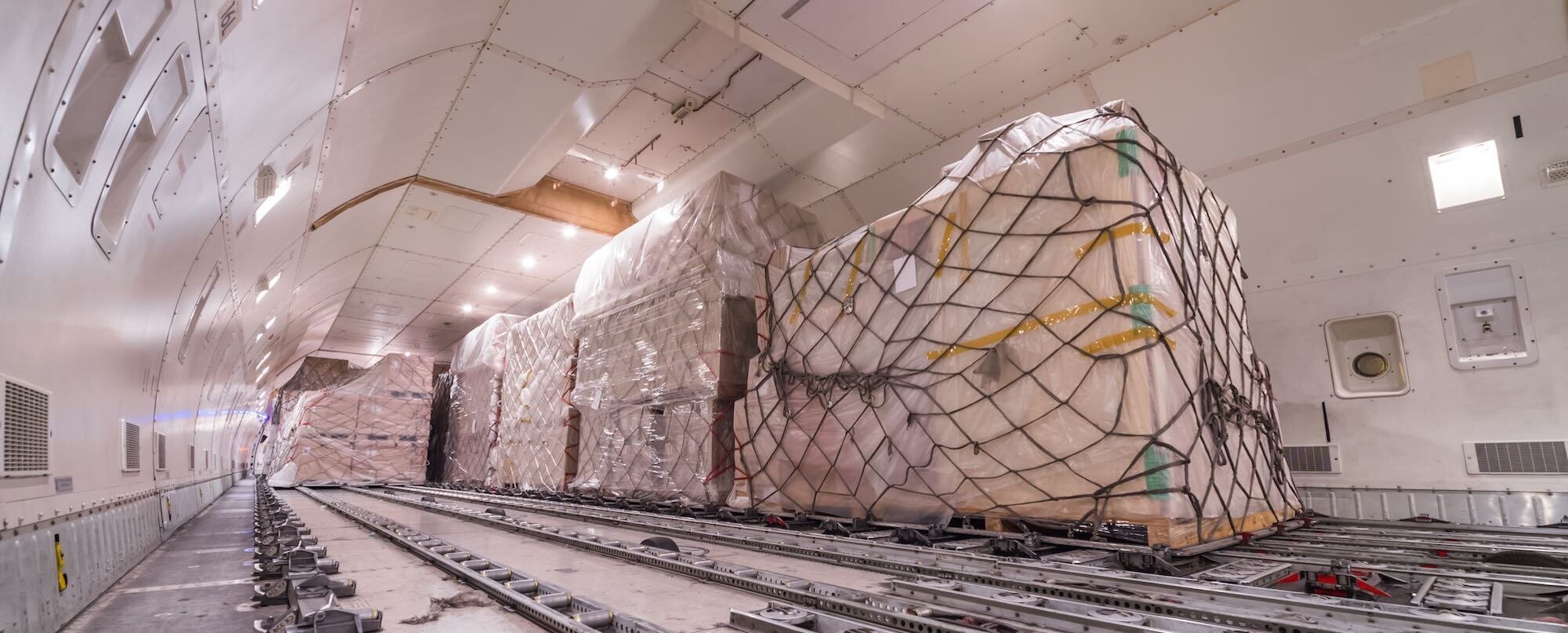
Piper PA-31
The twin-engine, turbo-charged Piper PA-31 is a dependable first responder in humanitarian air-charter work across North America. Its generous rear doors and quick-change cabin make it easy to switch from all-cargo to medevac or mixed configurations, allowing one aircraft to deliver boxes of water-purification tablets to a remote village in the morning and evacuate an injured relief worker by afternoon. Because the PA-31’s short-field performance lets it land on rough, 3,000-foot gravel or dirt strips—often the only usable airstrips after storms, floods, or wildfires—it can reach communities cut off from road access.
Turbocharged piston engines provide reliable power in harsh weather while keeping fuel consumption low, so repeated shuttle runs remain economical for aid agencies working under tight budgets. By combining agility, efficiency, and rapid re-tasking, the Piper PA-31 offers a flexible lifeline that brings critical supplies—and swift evacuation capability—directly to isolated areas when every hour counts.
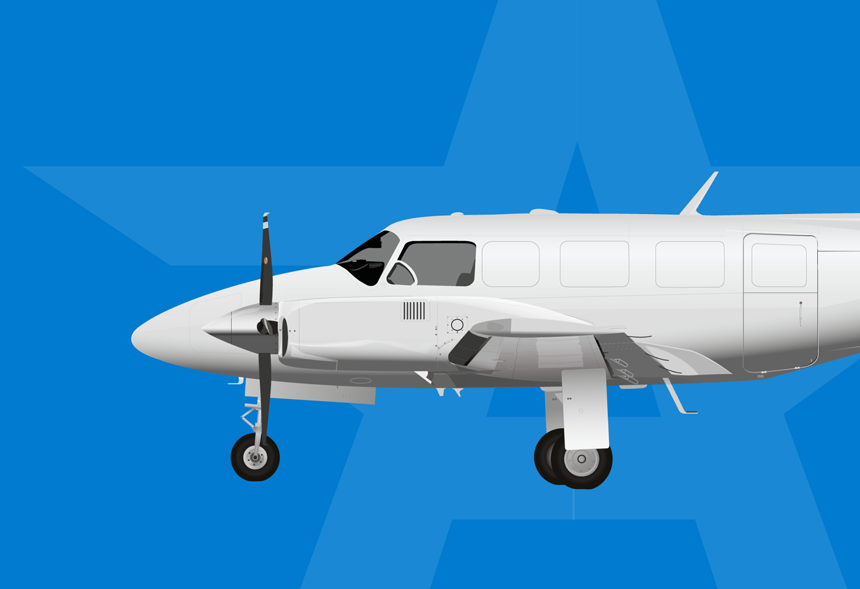
Cessna 406 Caravan II
The single-engine Pilatus PC-12 has become a mainstay of humanitarian air-charter operations because it pairs generous payload capacity with the agility to land almost anywhere. Its quick-change cabin lets crews strip out the seats in minutes, opening a full-size aft cargo door that can swallow pallets of medical supplies, collapsible water tanks, or stretcher patients without breaking down critical equipment.
Robust trailing-link landing gear, ample prop-clearance, and plenty of turboprop power give the PC-12 the confidence to touch down on gravel bars, makeshift grass strips, or sun-baked dirt runways—exactly the conditions relief teams often face in isolated Arctic hamlets, wildfire-damaged communities, or remote desert clinics. Despite that ruggedness, the aircraft cruises fast and high on modest fuel burn, keeping charter costs in check for agencies already stretched thin by emergency budgets. When a mission calls for one aircraft that can deliver vital cargo, evacuate the wounded, and turn around quickly for the next hop, the PC-12 delivers a rare blend of reach, efficiency, and “go-anywhere” reliability that keeps lifesaving aid moving.
Pilatus PC-12
The Pilatus PC-12 is a single-engine turboprop beloved by charter operators for its mix of payload, range, and go-anywhere capability. Seats come out quickly, turning the executive cabin into a spacious cargo bay accessed by a full-size aft door—large enough for pallets, medical stretchers, or outsize tech equipment.
Robust trailing-link gear, high prop clearance, and ample power give the PC-12 exceptional short-field and unimproved-strip performance on gravel, grass, or dirt, making it a natural choice for charters into Arctic villages, Mexican pipeline sites, or Canadian wilderness outposts.
Because it burns less fuel than comparable twins yet cruises fast and high, the PC-12 keeps per-mile costs reasonable while delivering premium speed and flexibility. For charter customers who need a single aircraft that can land almost anywhere, haul critical cargo, and turn around fast, the PC-12 is the go-to platform for remote-destination success.
Embraer EMB-110 Bandeirante
With its pressurized, quick-convert cabin and generous left-side cargo door, the twin-turboprop EMB-110 Bandeirante is a natural fit for humanitarian air-charter work. Crews can strip out the 18 passenger seats in minutes, creating a flat-floor hold ready for pallets of medical kits, water filters, or emergency rations destined for communities beyond scheduled air networks.
Rugged Pratt & Whitney engines and forgiving short-field handling let the aircraft slip onto gravel, ice, or dirt strips in Arctic settlements, back-country villages, and storm-damaged island runways. Straightforward maintenance keeps the Bandeirante in theater for extended shuttles between improvised airstrips, turning days of overland transit into a matter of hours and giving aid coordinators a reliable, cost-effective option for sustained relief lifts.
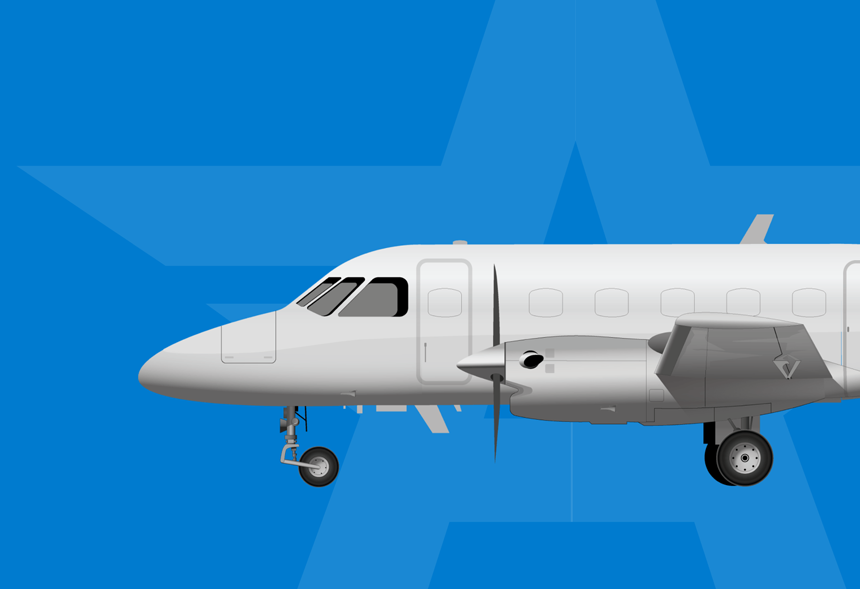
Shorts SD 360
Purpose-built for short-haul routes, the high-volume Shorts SD 360 excels at closing the last-hundred-mile gap in disaster response. Its square-section fuselage creates an unusually spacious cabin that transforms easily from 36-seat commuter layout to an all-cargo hold for boxed vaccines, shelter tarps, or generator sets.
Twin turboprops, a sturdy high-wing design, and excellent short-field performance allow the SD 360 to operate from narrow, under-equipped runways—whether a gravel strip at a remote mining camp repurposed as a relief hub or a hastily cleared coastal airfield after a hurricane. Quick side-loading and economical operating costs make the aircraft ideal for frequent shuttle runs between regional staging bases and hard-hit communities, delivering critical supplies swiftly and without the repositioning expenses larger freighters entail.
Antonov An‑26
In humanitarian air-charter work, the rugged Antonov An-26 is prized for its ability to touch down where paved runways and handling equipment simply don’t exist. A rear clamshell ramp lets forklifts drive pallets of food, tents, or even light vehicles straight onboard, so relief teams can load and unload in minutes.
High-mounted wings, powerful turboprops, and stout landing gear give the An-26 the confidence to operate from windswept gravel on Arctic coastlines, short dirt strips in mountain valleys, or makeshift runways cut into flood-damaged terrain. Straightforward systems and field-friendly construction mean crews can keep the aircraft flying far from maintenance hubs, allowing aid organizations to sustain a steady shuttle of supplies and medical evacuations until ground routes reopen.
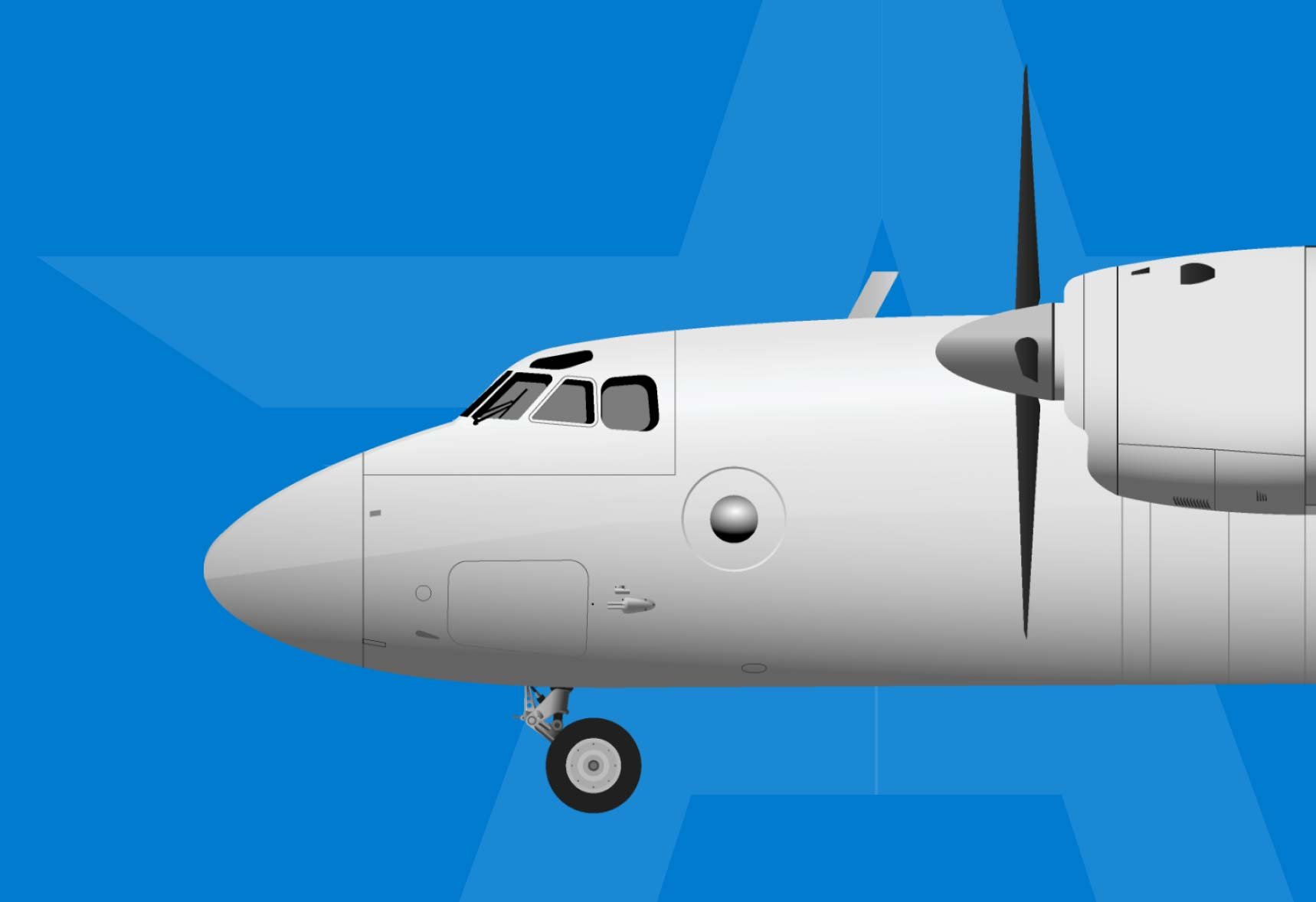
Convair CV-580
The twin-turboprop Convair CV-580 remains a dependable workhorse for humanitarian charters across North America precisely because it thrives where scheduled service ends. Its spacious, square-section fuselage converts quickly from commuter seating to a full-cargo layout loaded through a wide aft door—perfect for pallets of water purification gear, medical kits, and bulk relief stores.
With powerful engines and reinforced airframe, the CV-580 handles gravel, grass, or narrow mountain runways with ease, linking regional staging bases directly to remote settlements cut off by storms or wildfires. Reliable systems and plentiful spare parts let the aircraft stay on station for days, turning long overland hauls into fast, cost-effective airlifts that keep critical aid moving when every hour counts.
Boeing 727-200F
In humanitarian air-lift operations, the Boeing 727-200F fills the pivotal middle ground between slower turboprops and oversize wide-body jets. Its trijet design and sophisticated high-lift flaps let it launch from shorter runways than most comparable jet freighters, so relief planners can route directly into secondary or improvised airports—whether that means a storm-damaged Caribbean island, a windswept oil-field strip in northern Alberta, or a high-elevation airfield in the Rockies.
A reinforced main deck and large forward cargo door accommodate more than 20 metric tons of aid: palletized food rations, mobile water-treatment plants, or pre-packed field hospital modules. Because the 727 cruises at true jet speeds yet draws on a deep global supply chain for parts and crews, agencies can dispatch it quickly and keep it moving in sustained crisis shuttles—delivering life-saving cargo on demand when every hour without supplies counts.
Boeing 737-400F
When a relief mission demands jet speed but still requires access to under-served airfields, the Boeing 737-400F is a proven workhorse. Its stretch fuselage offers extra payload and a wide main-deck door while retaining the 737 family’s economical operating profile—an advantage for budget-constrained aid programs that must balance speed with cost. Gravel-kit and unpaved-runway options allow the 737-400F to touch down on semi-prepared strips across Alaska, the Canadian North, or remote coastal regions where larger freighters cannot risk a landing.
From these forward bases, the aircraft can move high-volume essentials—blankets, hygiene kits, tents, generator spares—straight to communities cut off by floods, earthquakes, or wildfires, bypassing overwhelmed hubs and eliminating costly ground transfers. Fast turnaround times, strong short-runway performance, and reliable point-to-point service make the 737-400F a vital link in getting critical supplies where they will do the most immediate good.
Learn More About the Boeing 737‑400FAirFreight.com – Air Cargo Charter Specialists Across North America
When lives are on the line, AirFreight.com delivers. Our air charters provide end-to-end air-lift solutions engineered for relief operations—moving food, medicines, shelter materials, and emergency personnel exactly where they are needed, exactly when they are needed. Because every crisis is different, we secure the right aircraft, routing, and ground support to match the mission.
Single Point of Contact
From Any Runway to Any Runway
24/7 Operations Center: Relief Never Sleeps
A Team Committed to the Cause
Frequently Asked Questions
What is an air cargo charter service?
An air cargo charter is the humanitarian sector’s fast-track to the sky: a privately hired freighter configured around lifesaving supplies rather than commercial schedules. Relief agencies dictate the route and timetable, ensuring a sealed chain of custody for medicines, shelter kits, or food parcels that cannot risk delay or diversion. In essence, your aid flies alone on its own aircraft, heading exactly where and when the crisis demands—an essential edge when hours mean lives.
How does an air cargo charter work?
First, the NGO or logistics partner defines the mission: cargo weight and dimensions, origin warehouse, disaster-zone airfield, and the deadline on the clock. The charter broker then matches those parameters to an aircraft with the right payload, range, and on-board equipment, while securing overflight permits and any humanitarian-corridor clearances. On departure day, the relief load is palletised, ramp-loaded, and flown nonstop—or with a single tech-stop for fuel—straight to the affected region. Because no other freight is competing for space, the flight operates point-to-point on demand, delivering a true “rent-a-cargo-plane” turnkey service for urgent aid.
When should I use an air cargo charter instead of regular freight?
Any time conventional options jeopardise the humanitarian outcome. Think earthquake zones where runways are damaged, cyclone-hit islands beyond scheduled networks, or medical-evac situations that can’t wait for the next freighter rotation. Charters are also the answer for outsized relief cargo—field hospitals, water-treatment plants, or truck-mounted generators—that won’t fit in a bellies-only service. If postponed arrival would stall a vaccination campaign, leave survivors without shelter, or shut down a mobile clinic, chartering becomes the fastest—and sometimes only—solution.
What are the benefits of air cargo charter flights?
How fast can an air cargo charter be arranged for urgent needs?
In true “go-now” scenarios, operators working 24/7 can locate an aircraft, crew, and flight plan in a matter of hours—often wheels-up within two to three hours of confirmation. Rapid-response desks exist precisely for earthquakes that strike at midnight or disease outbreaks announced on a holiday weekend. Lead time always depends on aircraft availability and permit complexity, but the charter industry is engineered for crisis speed—far faster than rerouting freight onto the next published flight.
Can I charter a cargo plane for emergency shipments or disaster relief?
Absolutely. Humanitarian airlifts are a core use-case for cargo charters, and reputable providers maintain standing relationships with UN agencies, Red Cross societies, and major NGOs. They understand the need to mobilise life-support cargo, operate into austere or improvised strips, and coordinate last-mile transfer with in-country partners. In practice, charters have flown field hospitals to Mozambique after cyclones, air-dropped food into South Sudan’s flood zones, and delivered COVID-19 vaccines to remote Pacific islands when commercial networks collapsed.
What is Aircraft on Ground (AOG) and how do air charters help?
“AOG” describes an aircraft stranded by a technical fault—every minute grounded is a minute relief flights can’t launch. Air cargo charters can rush critical spare parts or maintenance teams to return that aircraft to service, minimising downtime in an active crisis. When an airlift fleet loses a freighter mid-operation, a chartered jet carrying the replacement engine or avionics can be the difference between continual aid flow and a stalled response.
Can air cargo charters handle heavy lift and oversized cargo?
Yes. Operators can source nose-loading Antonov An-124s, ramp-loading IL-76s, or 747-400Fs that swallow 60-ton generators, bridge sections, or prefabricated clinic modules in a single piece. These aircraft come with on-board cranes, winches, and K-loaders, allowing bulky aid assets to travel intact and arrive mission-ready—eliminating the need to disassemble equipment and reassemble it in the field.
How are dangerous goods or hazardous materials handled on cargo charters?
From oxygen cylinders and flammable shelter heaters to temperature-sensitive vaccines packed in dry ice, charter providers follow IATA Dangerous Goods Regulations and ICAO standards to the letter. Crews are briefed on the exact nature of the cargo; the aircraft is certified for hazmat loads; and operators secure all documentation and route clearances in advance. Because the plane is solely yours, the materials are isolated from other freight or passengers, reducing risk and ensuring full compliance.
How do air cargo charters serve remote locations (like Alaska or rural areas)?
Relief charters excel at “last-mile by air.” Pilots fly into gravel runways in Alaska, short coral strips in the Pacific, or emergency-cleared taxiways in Caribbean islands after hurricanes. They can also stage into nearby regional airports and trans-load onto smaller bush planes or helicopters for the final hop. By sidestepping congested hubs and using aircraft matched to runway length and surface, charters cut days off delivery times and get aid closer to those who need it most.






